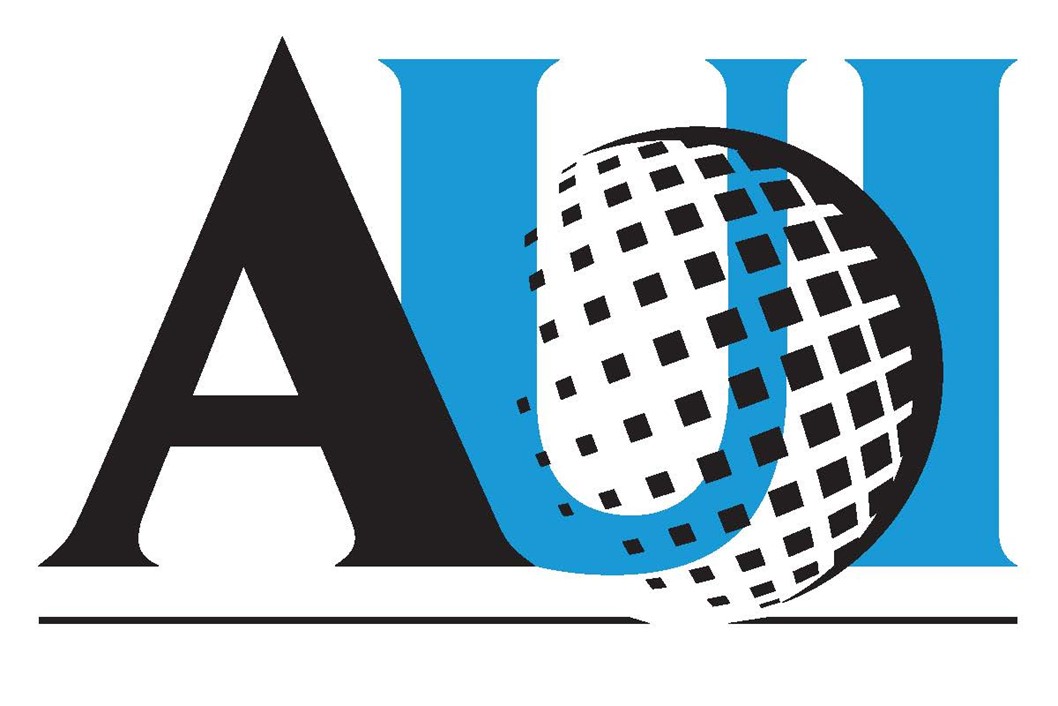AUI will present at the 247th meeting of the American Astronomical Society in Phoenix from January 4-8.
Recent News
ALMA Helps Unmask Monster Black Hole Behind Record-Breaking Cosmic Burst
Astronomers have used the Atacama Large Millimeter/submillimeter Array (ALMA) together with a suite of space- and ground-based telescopes, to study AT 2024wpp, the most luminous fast blue optical transient (LFBOT) ever observed.
Astronomers Make First Radio Detection of Rare Supernova Type, Revealing Secrets of Stellar Death
Astronomers using the U.S. National Science Foundation Very Large Array have captured the first-ever radio signals from a rare class of stellar explosion known as a Type Ibn supernova.
International Astronomical Union (IAU) General Assembly
Every year, astronomers from all around the globe gather for a couple of weeks at the IAU General Assembly to discuss their discoveries and observations, and to exchange ideas and challenges facing astronomy. This year the assembly is taking place in Honolulu, Hawaii. I had the privilege to give opening remarks this past Tuesday. As I said in my remarks, “it is a great honor to represent the Obama Administration at this historic event.”
NSF is one of the world’s leading institutions in astronomy. For decades, NSF-funded researchers have been exploring the most intriguing mysteries of the heavens. We hope to continue doing so!
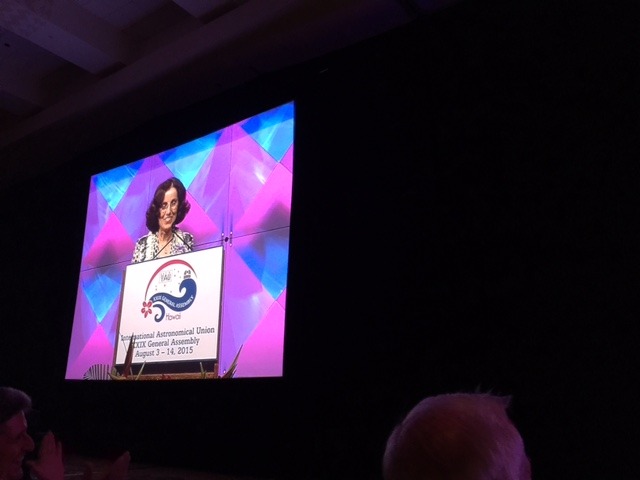

Great catching up with the National Solar Observatory (NSO) and NSF solar astronomy program officer Dave Boboltz. One of NSO’s major projects is the NSF-funded Daniel K. Inouye Solar Telescope on Haleakala, Hawaii. This telescope will provide new insights into solar phenomena, including solar storms. Photo credit: NSF
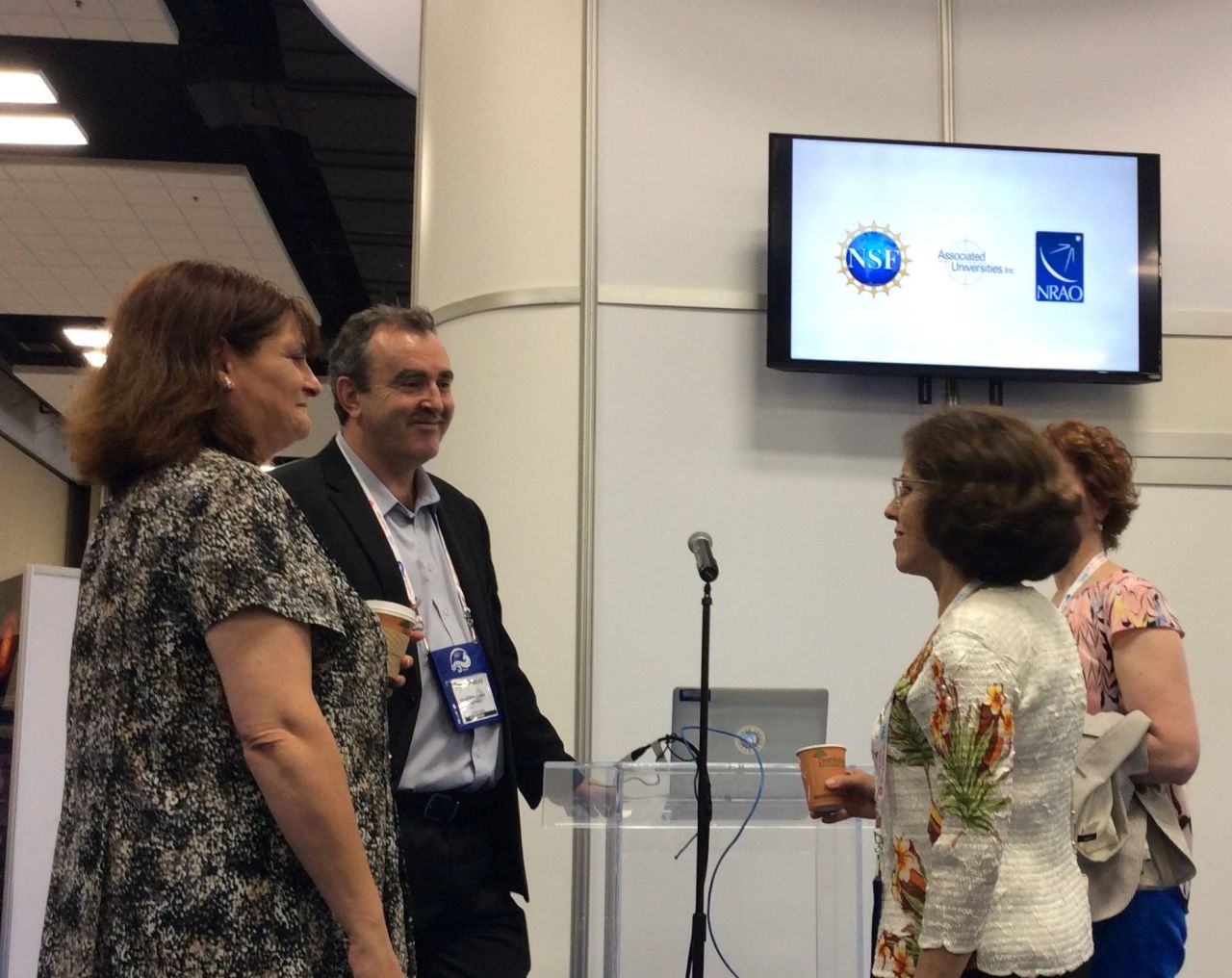
With the recent announcement about Breakthrough Listen, I enjoyed talking with National Radio Astronomy Observatory’s Tony Beasley about how NSF-funded radio astronomy will play a key role. Photo credit: NSF
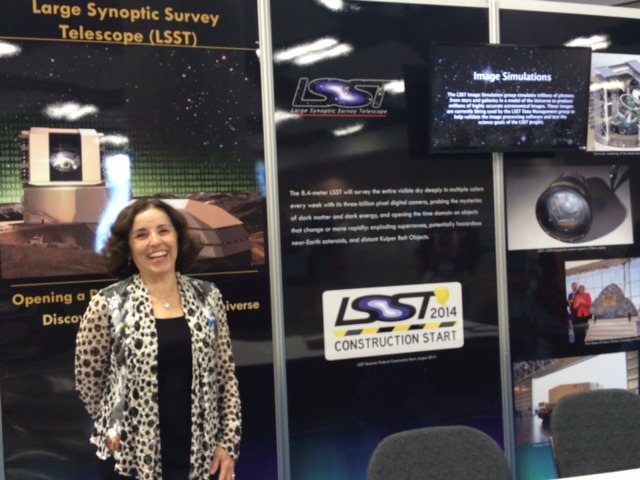
The Large Synoptic Survey Telescope in Chile has the world’s largest digital camera. Photo credit: NSF
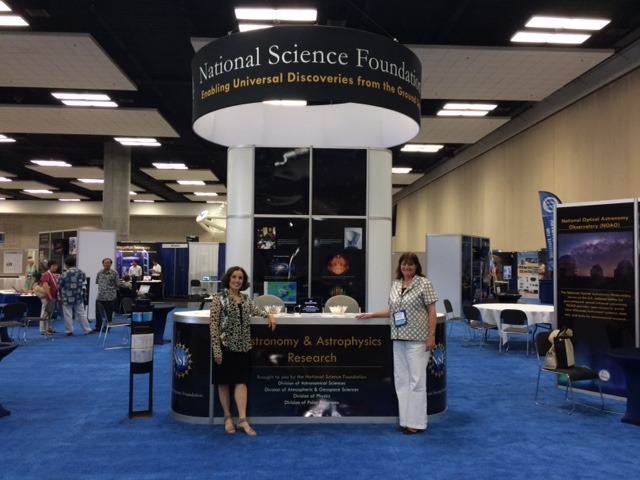
NSF booth at the assembly. I’m with Patricia Knezek, NSF deputy division director for the Division of Astronomical Sciences. Photo credit: NSF
Follow and engage in the online conversation using #IAU2015 and #NSFastronomy.
Recent News
AUI to Attend AAS 247 Conference
AUI will present at the 247th meeting of the American Astronomical Society in Phoenix from January 4-8.
ALMA Helps Unmask Monster Black Hole Behind Record-Breaking Cosmic Burst
Astronomers have used the Atacama Large Millimeter/submillimeter Array (ALMA) together with a suite of space- and ground-based telescopes, to study AT 2024wpp, the most luminous fast blue optical transient (LFBOT) ever observed.
Astronomers Make First Radio Detection of Rare Supernova Type, Revealing Secrets of Stellar Death
Astronomers using the U.S. National Science Foundation Very Large Array have captured the first-ever radio signals from a rare class of stellar explosion known as a Type Ibn supernova.
